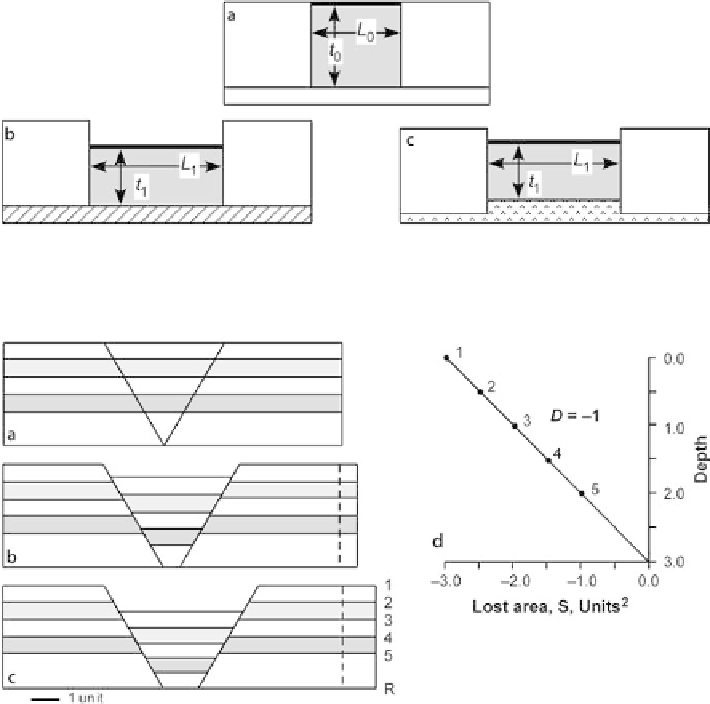Geology Reference
In-Depth Information
Fig. 11.61.
Vertical-sided, area-balanced graben.
a
Before deformation.
b
After deformation, subsid-
ence controlled by depth to the detachment.
c
After deformation, subsidence controlled by isostatic
response of the system
Fig. 11.62.
Kinematic evolution of a pure shear full graben (after Groshong 1994).
a
Undeformed.
b
Initial stage of deformation.
c
Final stage of deformation.
d
Area-depth diagram of
c
.
Numbered points
correspond to
numbered horizons
in the cross section. Horizon 1 is the reference level
area at the lower detachment and the slope indicates a displacement of 1 unit. A model
discussed previously (Fig. 11.18) is also a pure shear graben, but with growth sedi-
ments. Here the focus is on the internal strain in the graben.
Figure 11.63 shows the magnitudes of the layer-parallel strains for each horizon in
the full graben model of Fig. 11.62c. The strain can be determined directly from the figure
by comparing the bed lengths before and after the deformation (Eq. 11.2) as well as from
the lost areas and depth to detachment as discussed in Sect. 11.4.3.2
(Eq. 11.26 or 11.27).
Both methods give the same result. For this model the requisite strains are small in the
upper part of the graben but increase rapidly toward the lower detachment and would
approach infinity at the lower detachment because the original bed length there was zero.
Quite a different strain magnitude is obtained if the total thickness change is used to
calculate the extension (Eq. 11.10) as would be appropriate for a vertical-sided graben.

